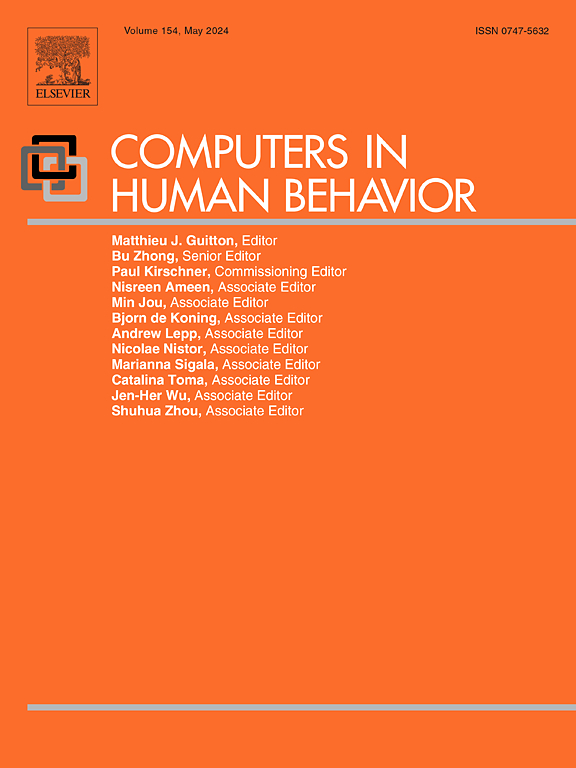Investigating the cognitive enhancement effects of multisensory VR reminiscence therapy on older adults: Analyzing the impact of sensory combinations
IF 9
1区 心理学
Q1 PSYCHOLOGY, EXPERIMENTAL
引用次数: 0
Abstract
As individuals age, sensory functions and cognitive abilities decline, particularly in spatial positioning, detailed memory, and time sequencing, which significantly affect daily life. While VR has been used for cognitive training, most systems rely primarily on visual stimuli, with limited integration of multiple sensory modalities. Consequently, the specific benefits and interactions of multisensory stimulation with cognitive functions in older adults remain unclear.
This study examines the effects of multisensory VR stimulation compared to visual-only VR on older adults' spatial positioning, detailed memory, and time sequencing. We developed a culturally relevant VR experience based on traditional Taiwanese agricultural life, integrating visual, auditory, tactile, and olfactory stimuli to evoke emotional memories and stimulate cognitive function.
Thirty older adults (65–75 years) were recruited and divided into two groups through a structured allocation process. The experimental group (n = 15) used the multisensory VR system, while the control group (n = 15) used the visual-only VR system. Allocation was balanced based on age, cognitive ability (HDS-R scores), and other relevant factors to maintain internal validity.
After four stages of reminiscence-based cognitive training, participant performance was assessed using the Comprehensive Cognitive Ability Test Questionnaire, the Cognitive Function Recall Effectiveness Scale, and the Multisensory Stimulation and Cognitive Rule Correspondence Assessment Scale. The results showed that the experimental group outperformed the control group in spatial positioning, detailed memory, and time sequencing. These findings highlight the impact of different sensory combinations on cognitive functions, emphasizing the role of multisensory integration in cognitive enhancement among older adults.
多感官VR回忆疗法对老年人认知增强效果的研究:分析感官组合的影响
随着年龄的增长,个体的感觉功能和认知能力下降,尤其是空间定位、细节记忆和时间排序能力下降,严重影响日常生活。虽然VR已被用于认知训练,但大多数系统主要依赖于视觉刺激,对多种感官模式的整合有限。因此,多感觉刺激对老年人认知功能的具体益处和相互作用尚不清楚。本研究考察了多感官VR刺激与仅视觉VR刺激对老年人空间定位、细节记忆和时间顺序的影响。我们以台湾传统的农业生活为基础,结合视觉、听觉、触觉和嗅觉刺激,开发了一种与文化相关的VR体验,以唤起情感记忆和刺激认知功能。招募了30名老年人(65-75岁),并通过结构化的分配过程分为两组。实验组(n = 15)使用多感官VR系统,对照组(n = 15)使用纯视觉VR系统。根据年龄、认知能力(HDS-R评分)和其他相关因素平衡分配,以保持内部效度。经过四个阶段的记忆认知训练后,采用综合认知能力测试问卷、认知功能回忆有效性量表和多感觉刺激与认知规则对应性评估量表对被试的表现进行评估。结果表明,实验组在空间定位、细节记忆和时间排序方面优于对照组。这些发现强调了不同感觉组合对认知功能的影响,强调了多感觉整合在老年人认知增强中的作用。
本文章由计算机程序翻译,如有差异,请以英文原文为准。
求助全文
约1分钟内获得全文
求助全文
来源期刊

Computers in Human Behavior
Multiple-
CiteScore
19.10
自引率
4.00%
发文量
381
审稿时长
40 days
期刊介绍:
Computers in Human Behavior is a scholarly journal that explores the psychological aspects of computer use. It covers original theoretical works, research reports, literature reviews, and software and book reviews. The journal examines both the use of computers in psychology, psychiatry, and related fields, and the psychological impact of computer use on individuals, groups, and society. Articles discuss topics such as professional practice, training, research, human development, learning, cognition, personality, and social interactions. It focuses on human interactions with computers, considering the computer as a medium through which human behaviors are shaped and expressed. Professionals interested in the psychological aspects of computer use will find this journal valuable, even with limited knowledge of computers.
 求助内容:
求助内容: 应助结果提醒方式:
应助结果提醒方式:


